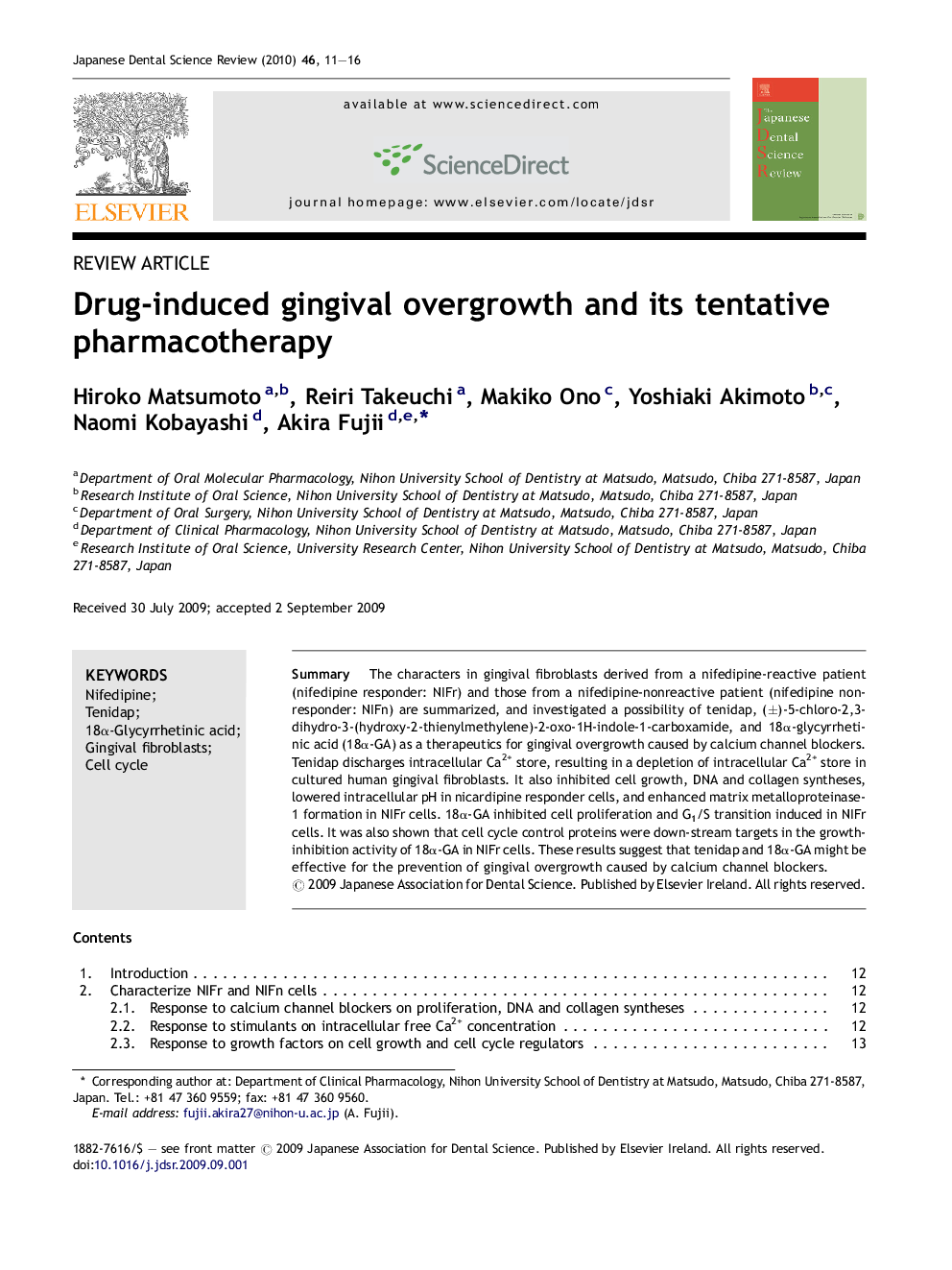| Article ID | Journal | Published Year | Pages | File Type |
|---|---|---|---|---|
| 3136496 | Japanese Dental Science Review | 2010 | 6 Pages |
SummaryThe characters in gingival fibroblasts derived from a nifedipine-reactive patient (nifedipine responder: NIFr) and those from a nifedipine-nonreactive patient (nifedipine non-responder: NIFn) are summarized, and investigated a possibility of tenidap, (±)-5-chloro-2,3-dihydro-3-(hydroxy-2-thienylmethylene)-2-oxo-1H-indole-1-carboxamide, and 18α-glycyrrhetinic acid (18α-GA) as a therapeutics for gingival overgrowth caused by calcium channel blockers. Tenidap discharges intracellular Ca2+ store, resulting in a depletion of intracellular Ca2+ store in cultured human gingival fibroblasts. It also inhibited cell growth, DNA and collagen syntheses, lowered intracellular pH in nicardipine responder cells, and enhanced matrix metalloproteinase-1 formation in NIFr cells. 18α-GA inhibited cell proliferation and G1/S transition induced in NIFr cells. It was also shown that cell cycle control proteins were down-stream targets in the growth-inhibition activity of 18α-GA in NIFr cells. These results suggest that tenidap and 18α-GA might be effective for the prevention of gingival overgrowth caused by calcium channel blockers.
